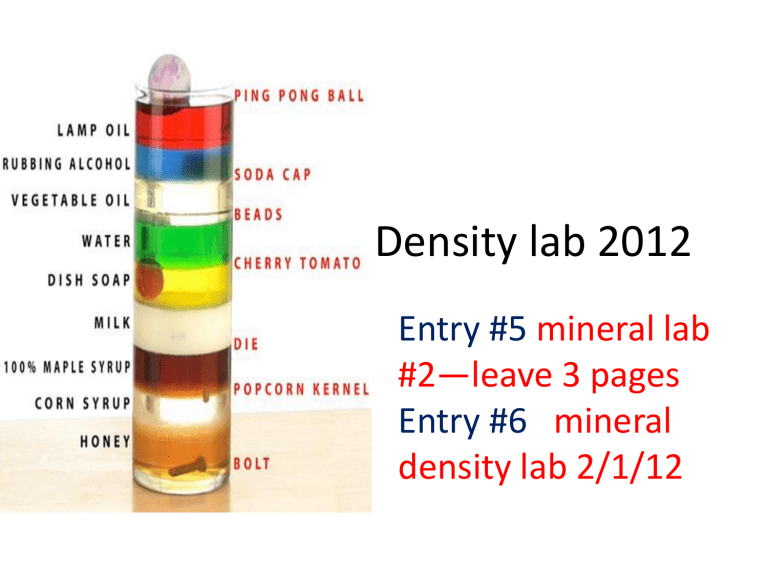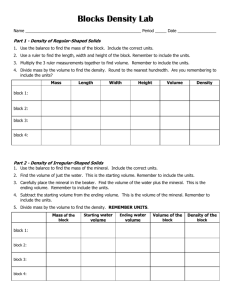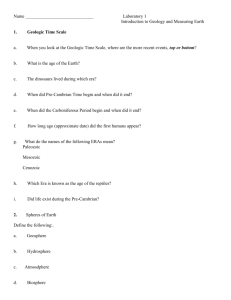Density lab 2012

Density lab 2012
Entry #5 mineral lab
#2—leave 3 pages
Entry #6 mineral density lab 2/1/12
DENSITY
• a physical property of matter
• Defined : the mass of an object in grams diveided by the volume of the object in cm3.
• examples:
A rock is obviously more dense than a crumpled piece of paper of the same size.
A styrofoam cup is less dense than a ceramic cup.
Density
• formal definition of density is mass per unit volume.
• Usually the density is expressed in grams per mL or cc.
• Mathematically a "per" statement is translated as a division. cc is a cubic centimeter and is equal to a mL
• Therefore,
Density = mass in g / volume in cm3 = g/mL
Note : 1 ml = 1 cm3
Mass defined as : matter
Volume defined as : space
• In order to determine the density of an object, it is necessary to know: the mass, the volume of the substance, and the definition of density.
• Density = mass (g) volume (mL)
• Example: Calculate the density in g/mL of aluminum if a 50 mL block weighs135 g. Solution:
Apply the definition:
• Density =
135 g = 2.70 g/mL
50 mL
Mass = density times volume volume = mass divided by density
• If the density of a substance and mass is known, volume can be calculated using either simple algebra.
• If the density of a substance and volume is known, mass can be calculated using simple algebra
• The density must be translated as a conversion factor.
• Example: Calculate the mass in a 200 cc block of
Titanium with a density of 4.51 g. per cc. Solution:
4.51 g times 200 = 902 g
Density Lab 2012
• I. TITLE : DENSITY LAB FOR MINERALS
• II. PURPOSE :to determine the densities of the minerals in the lab using the mass value divided by the volume
• III. PROCEDURE : (RTB) – measure the masses of the elements using the scales in the room and determine the volumes using displacement.
Displacement
the volume of the water displaced is equal to the volume of the mineral.
Displacement
the volume of the water displaced is equal to the volume of the mineral.
A key is an irregular solid, and the increase in volume in the graduated cyliner is equal to the volume of the key the volume of the water displaced is equal to the volume of the mineral.
For regular solids – you can use a mathematical formula
For regular solids – you can use a mathematical formula
• We will not be using the graduated cylinder and dropping the mineral into the graduated cylinder -- we will be using a completely filled beaker and measure the volume of the water that is displaced after the mineral is placed into the beaker, as the volume of the water displaced is equal to the volume of the mineral.
We will measure displacement by using the method below
Plastic beaker
Use the plastic shoe box without the lid
To find volume : get a graduated cylinder and beaker
Fill the beaker completely to the top with water and place the beaker in the plastic container
Pour the displaced water into the graduated cylinder and record the volume of the water , which is equal to the volume of the rock
We will measure displacement by using the method below
• Fill the beaker completely with water,place in the beaker in the plastic box, and drop the mineral into the beaker. Water will flow out and the volume of the water that collects in the box,is equal to the volume of the mineral .
Mineral Groups
Mineral groups
groups
MINERAL
Entry #6 mineral density lab
IV. DATA
MASS in grams VOLUME in cm3
DENSITY in g/cm3
Mineral group that the mineral belongs to :
1.
30.







